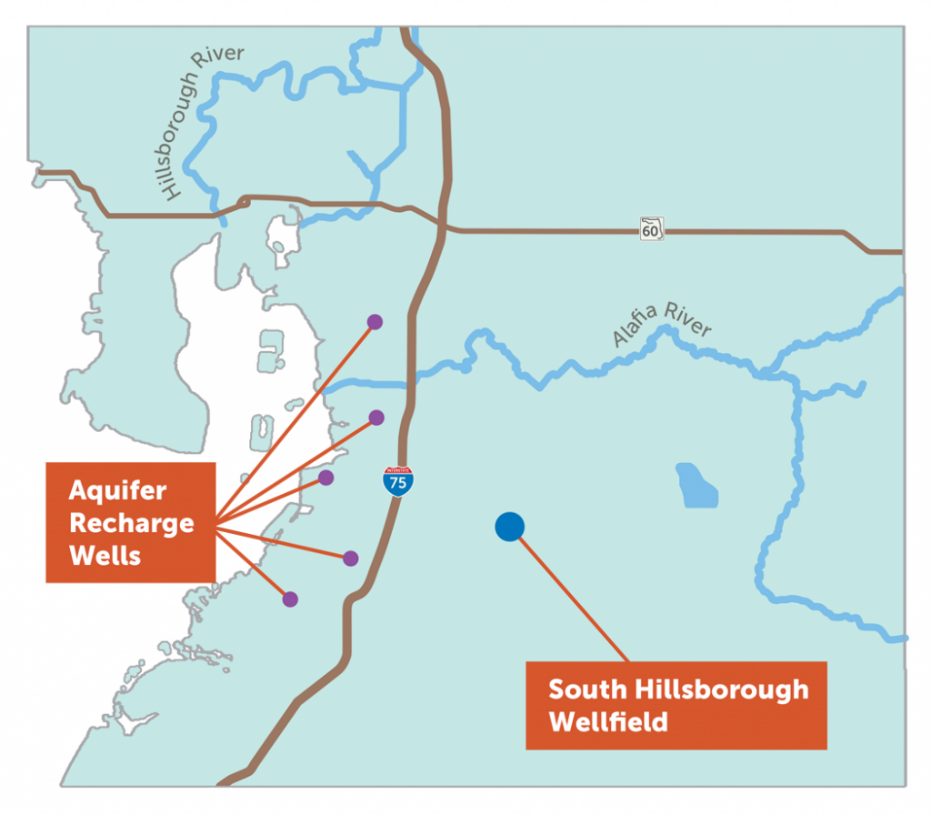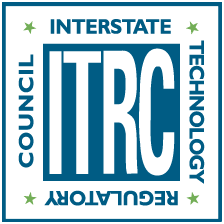Author: Gregg Jones
Site Name: South Hillsborough Aquifer Recharge Project (Apollo Beach)
Location: Hillsborough County, Florida
Operator(s): Hillsborough County Public Utilities
Permitting Agency(s): Florida Department of Environmental Protection (FDEP), Southwest Florida Water Management District (SWFWMD)
Current MAR Status: Pilot testing is now complete and additional injection wells are being constructed.
Year Constructed: 2015
Costs: Not available
Project Contact Information: Jeff Greenwell, section manager, Hillsborough County Public Utilities
Project Website/Publication Links:
- https://www.hillsboroughcounty.org/en/government/county-projects/highlighted-cip-projects/aquifer-recharge-projects
- https://www.tampabaywater.org/supply/projects/south-hillsborough-wellfield/
Purpose of MAR:
- Water supply resilience
- Improving groundwater quality
- Mitigation against saltwater intrusion
Source Water:
- Reclaimed water (high-level disinfection public access-quality)
Water Quality:
- Pretreatment required
Recharge Technology(s):
- Injection wells
Project Description
The Floridan Aquifer is the principal source of water in most of north and central Florida. The aquifer has been severely depleted by pumping for public and private water supplies, changes in weather cycles and precipitation patterns, and increases in sea level. As groundwater withdrawals have increased, saltwater has intruded into the freshwater portions of the aquifer in coastal southern Hillsborough County. This has resulted in the abandonment of coastal wells. To reduce the rate of intrusion of saltwater into the aquifer, the SWFWMD has banned additional groundwater withdrawals in the region.
In 2009, Hillsborough County Public Utilities started investigating the potential to inject its high-level disinfection public access-quality reclaimed water into the Floridan aquifer to:
- act as a barrier to saltwater intrusion
- create a path to the restoration of local groundwater levels
- support a long-term and sustainable solution to water management challenges in the Hillsborough County Public Utilities service area
In coordination with the FDEP and SWFWMD, Hillsborough County embarked on a reclaimed water indirect aquifer recharge pilot project in non-drinking-water portions of the Floridan aquifer in the southern coastal area of the county.
The project pumps highly treated reclaimed water into the saltwater zone that separates the water under Tampa Bay from the fresh water in the aquifer (Figure 1). The recharged water creates a freshwater barrier that not only helps to prevent intrusion of saltwater but also helps impound fresh groundwater several miles inland, which improves the environment and water levels upstream of the recharge area. The recharge wells that pump reclaimed water into the aquifer are near the coast and several miles seaward of public supply wells that pump fresh groundwater from the aquifer. Groundwater in the aquifer naturally flows toward the Gulf of Mexico, which pushes the reclaimed water away from the areas where public supply wells are located. The county operates multiple monitoring and injection wells to regularly track aquifer water levels and water quality.

Figure 1. Salinity barrier concept in the Upper Floridan Aquifer, Hillsborough County, Florida.
Source: Hillsborough County (2023)
Project Planning/Implementation
Data from the South Hillsborough County Aquifer Recharge Project has shown significant recovery of fresh groundwater storage levels, a halt to saltwater intrusion, and seasonal stabilization in the aquifer in the area of recharge. Water quality testing has shown no negative impacts where freshwater withdrawals occur.
Upon successful completion of pilot testing, Hillsborough County will add three recharge wells to the three that are currently operational, which will result in a reclaimed water injection capacity of at least 10 mgd. This will allow the Southwest Florida Water Management District to make approximately 6.15 mgd of groundwater withdrawal credits available to Hillsborough County. Tampa Bay Water, the major supplier of potable water for public water systems in the Tampa Bay area, will purchase and use the credits for the development of a new public supply wellfield (Figure 2). The wellfield will consist of eight new production wells, piping, water treatment facilities, a storage tank, and pumping facilities. Figure 2 shows the location of the recharge wells and the proposed South Hillsborough wellfield within Hillsborough County.

Figure 2. Location of recharge wells and proposed South Hillsborough wellfield.
Source: Hillsborough County (2023)


